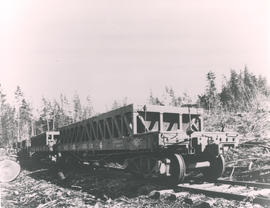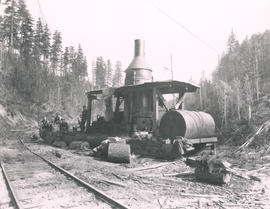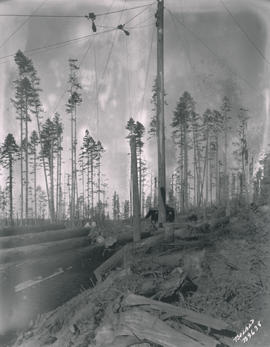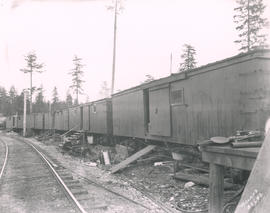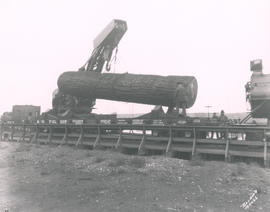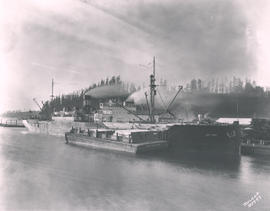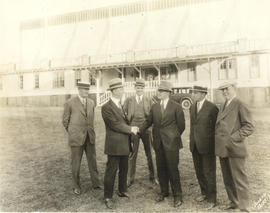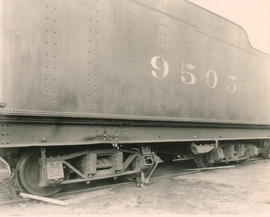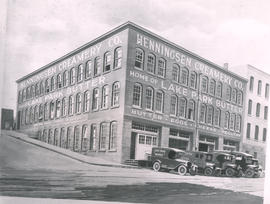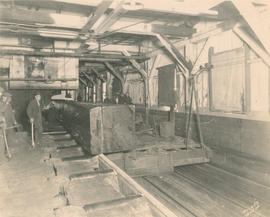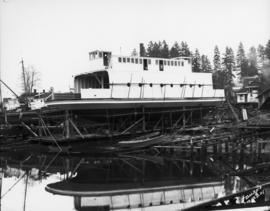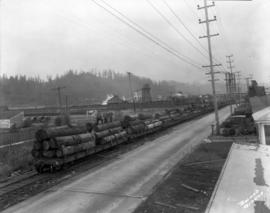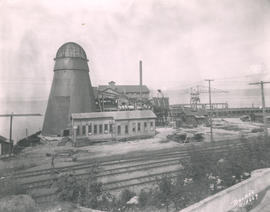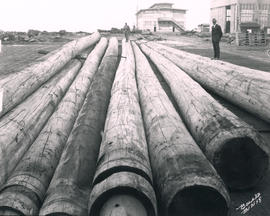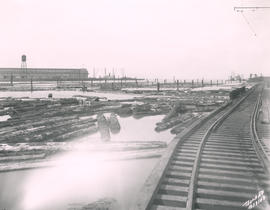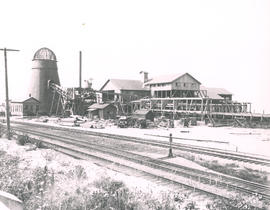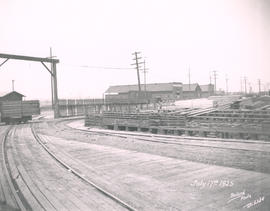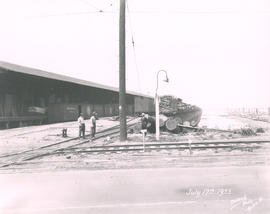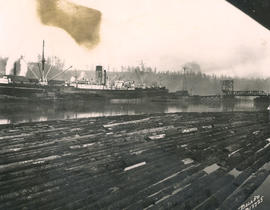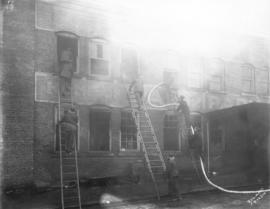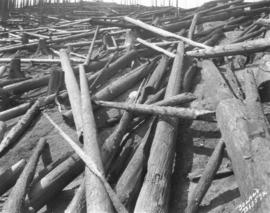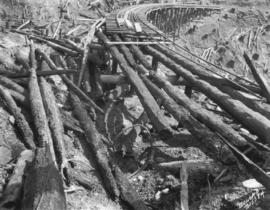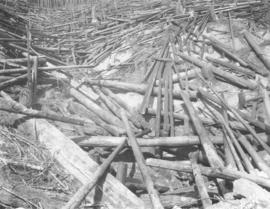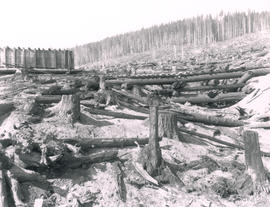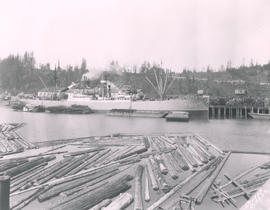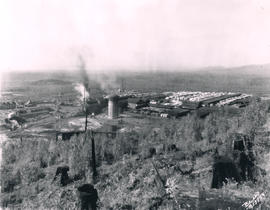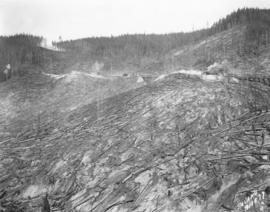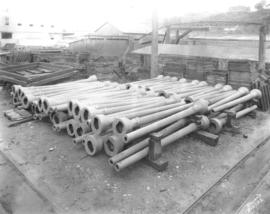On August 21, 1926, H.T. Moore of the Moore Amusement Company, owner of the Rialto and Colonial Theaters, joined forces with the new Pacific Northwest Theaters Inc. Moore, left, is shown shaking hands with Harry C. Arthur of Los Angeles, president of the new organization, in front of H.C. Weaver Productions, Inc., movie studio at Titlow Beach. H.C. Weaver, head of the studio, stands with his hands in pocket, on far right in this sepia photograph. Left to right, the group includes J.F. Douglas, Moore, G. C. Kirley, Arthur, L.S. Hamm and Weaver. The group, which was organized to consolidate motion picture distribution in the Pacific Northwest, was touring the studio. The studio was built in 1924. Weaver Productions hoped to lure Hollywood to film extensively in the Northwest; however, the studio apparently only made three motion pictures in their four-year existence. It closed in 1928 and was later converted into a dance hall in 1932 before being destroyed by fire that same year. Boland B15513, BU-13759, TPL-8182 (TNT 8/23/1926, pg. 6)
Motion picture studios--Tacoma; Weaver, H.C.; Shaking hands--Tacoma; H.C. Weaver Productions, Inc. (Tacoma);
